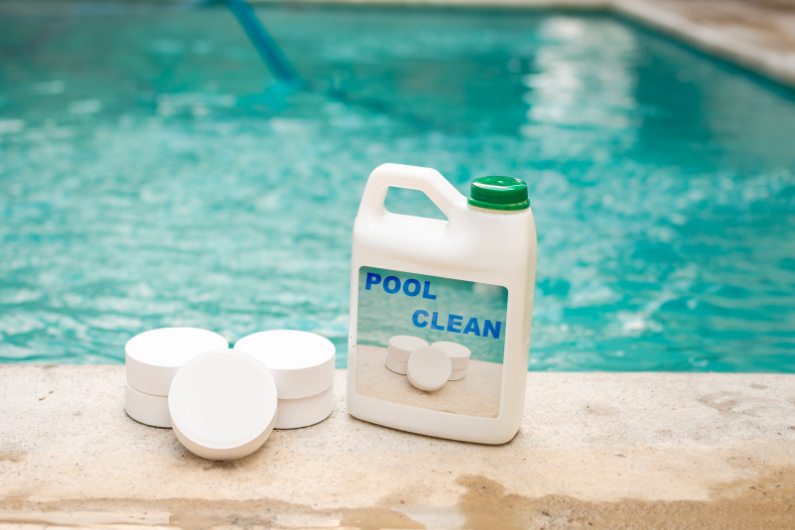
A widespread chlorine shortage sets businesses on edge, and it could get worse – driving chlorine prices even higher. A range of factors has led to tight supplies, including the rise in demand in the pool industry, temporarily reduced supply, and chemical plant fire.
This damaged a major portion of the manufacturing capacity. Chlorine is among the ten biggest volume chemicals produced in the United States. If you are working with chlorine, you have without a doubt noticed the rising prices and chlorine shortage. Here is a quick look at all you need to know. (1)
Discover professional insights on this topic from the eBook
Why Has the Price of Chlorine Gone Up?

In the United States, the price of chlorine per ton averaged $725 FOB US Gulf. The Producer Price Index (PPI) in April went from 464.660 to roughly 507.236 in June 2022. Therefore, summing up the inflation in the country. (2)
➔ In the past two decades, an average 50lbs bucket of chlorine would cost about $75 to $85. In the last year, it went up to $140, with a proposed cost of $158 in the near future.
According to experts, American manufacturers can’t streamline their chlorine production due to growing market sentiment. Because the supply and demand don’t match, the prices remained higher than in the last quarter. There was also a pandemic-driven boom in the construction of pools.
In 2020, the market size of the US swimming pool section reached $1.01 billion. In 2022, it reached $1.33 billion. Being stuck at home meant that many families were sitting on savings they had planned for vacations. And the limited traveling made pools all the more popular. (3)
Recent reports show that there are 255,000 commercial pools and 5.2 million residential inground pools in the United States. And about 60% to 70% are using chlorine tablets. Panic buying can exacerbate the problem. People started buying early, way too early and stockpiling as much as they can. (4)
Pool owners and maintenance businesses expect to have to go from using tablets to powdered chlorine. From powdered to liquid chlorine, and from liquid to non-chlorinated things. Many believe that all of these chlorine options can eventually run out.
Why Is There a Chlorine Shortage?

In late 2020, hurricane Laura destroyed major chlorine manufacturing plant in Louisiana. This damaged 40% of the US chlorine tablet supply. In 2022, another key factory caught fire in New Jersey. This destroyed 100,000 lbs of chlorine tablets. But, the United States is not the only region dealing with a chlorine shortage.
In the middle of the economic meltdown, the prices for commodities are skyrocketing in Europe. With retaliatory tariffs against Russia, the market is suffering from a profound shortage of chlorine products. This is why traders increased the offers on the currently available products to get better profit margins.
Will Chlorine Ever Come Down in Price?

When will chlorine prices go down? This is a popular question among pool and business owners. Luckily, these increasing prices won’t last forever. The cost of chlorine is expected to come down as soon as the supply goes up. Now, there is no exact time when that will happen, but, experts estimate that the prices probably won’t come down until 2023.
Overall, when the chlorine plants are up and running, the United States should have a better production capacity. This can make it easier to keep up with supply and demand, thus reducing prices. Do have in mind that stocking up on chlorine does have its downsides. Firstly, you will need to store the chlorine safely for the entire winter.
Secondly, if you don’t store the chlorine properly, it starts degrading faster than its normal 3-5 year shelf life. And, if you get more than you can use, the shortage of chlorine products makes it harder for other people to find enough chlorine tablets. In fact, hoarding can make chlorine tablets as scarce as toilet paper at the start of the pandemic. At the end of the day, you will have overpaid for most of the products you have. (5)
Alternatives to Chlorine for Disinfection Purposes
If you are running out of chlorine tablets, there are a couple of chlorine alternatives you can use. The suggestions below can help.
- Bromine – This is a practical substitute for chlorine. But, it is not the best money-saving strategy. Bromine is similar to chlorine, except it comes at a costly price. And just like chlorine, it requires to be applied together with other chemicals.
- Biguanide – This is a PHMB disinfectant and practical spa water and swimming pool sanitizer. It can be used as an alternative to bromine or chlorine. It is a cationic polymer that’s typically available in the form of liquid featuring 20% PHMB. But, PHMB has relatively mild coagulating properties. Meaning that it could create insoluble particles with some impurities in the water.
- Ozone-based/UV light sanitizing – These alternatives are best used for big commercial pools. They can blast some bacteria and viruses that are resistant to chlorine. Although you might have to add supplemental chlorine, this system does all the heavy lifting. Installing ozone or UV systems does have a higher up-front cost than chlorine.
- Copper ionization system – Copper plays a key role in preventing algae. It is known for its potent antimicrobial compounds. To top it all off, it doesn’t leave any residual chemicals. And after you install it, the system is affordable and easy to operate.
- Other forms of chlorine – If tablets are out of the picture, pool owners or businesses can use liquid or granulated forms of chlorine. These require a manual application. But, can get the job done.
Reference: HOCL (HYPOCHLOROUS ACID WATER): ALL YOU NEED TO KNOW
Conclusion
The chlorine industry is going through a hefty ordeal. While COVID-19 takes its share of the blame, other reasons also play a role in chlorine shortages and rising prices. With Hurricane Laura and the fire on some premises, US chlorine manufacturing took a heavy blow. But, the United States is not the only area dealing with the shortages. Europe also struggles with the ongoing conflict with Russia and the rise in demand. In the meantime, you might want to consider using chlorine alternatives. For example, you can convert your chlorinated pool system into ozone-based sanitizing. Other options can also help, like bromine and biguanide.
Discover professional insights on this topic from the eBook below. Store the data and make it yours.

References
1. https://www.health.ny.gov/environmental/emergency/chemical_terrorism/chlorine_tech.htm2. https://www.procurementresource.com/resource-center/chlorine-price-trends
3. https://www.statista.com/statistics/1176571/swimming-pool-industry-market-size-us/
4. https://www.cnbc.com/2021/04/30/a-major-chlorine-shortage-is-set-to-spoil-swimming-pool-fun-this-summer.html
5. https://kdvr.com/reviews/4-affordable-chlorine-brands-to-buy-online-despite-shortage/


